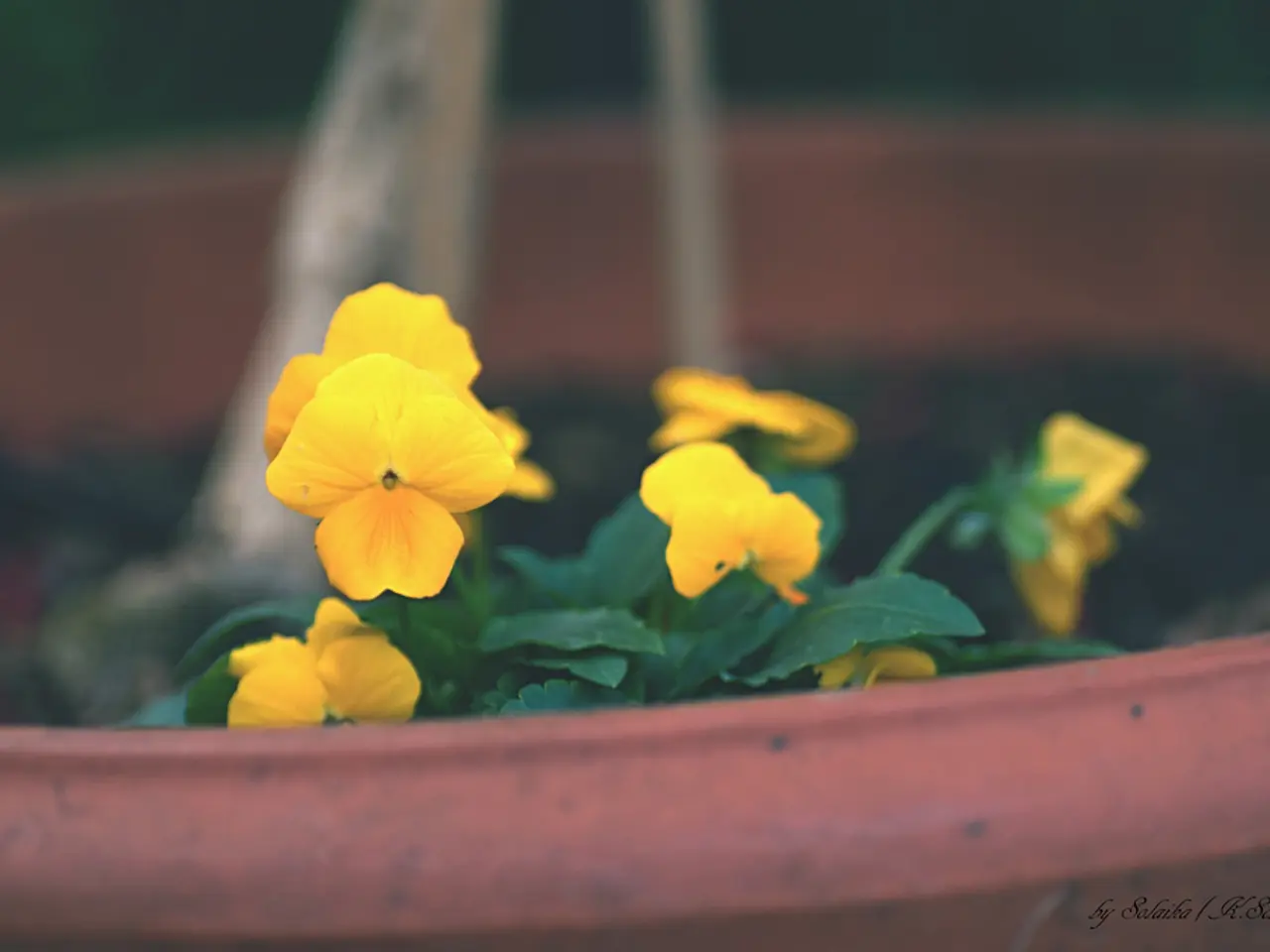Tips for nurturing coneflowers by a seasoned horticulturist for extended, spectacular blooms
Caring for Coneflowers: A Guide to Fertilizing
Coneflowers, a popular perennial known for their long-lasting summer and fall color, are a favourite among gardeners and pollinators alike. These tough perennials, including the purple coneflower (Echinacea purpurea), are efficient nutrient users, but they can benefit from a little extra care, including feeding.
When it comes to fertilizing coneflowers, the key is to choose a product with a higher potassium (potash) content and balanced moderate nitrogen and phosphorus. A 4-4-6 or 5-5-8 NPK ratio is ideal, as it promotes strong flowering rather than excessive foliage growth.
For coneflowers growing in the ground, a single feed in early spring when new growth appears is recommended. This can be done with compost or a balanced slow-release fertilizer. It's best to avoid feeding them in late summer or August, as this can stimulate late soft growth that is prone to frost damage and weakens the plant entering winter. If coneflowers look sparse or tired later in the growing season, a light feed after deadheading can help extend blooming, but routine late-summer feeding is discouraged.
Coneflowers grown in pots require more consistent feeding due to faster nutrient depletion. A liquid fertilizer with a balanced or higher potassium content should be applied every 2-3 weeks during the active growing season to maintain bloom production. It's important to use well-draining potting mix and keep the plant adequately watered to avoid stress. Like their ground-dwelling counterparts, high nitrogen fertilizers should be avoided, as they can cause excessive foliage growth at the expense of flowers. Fertilizing frequency can be reduced or stopped in late summer to allow the plant to prepare for dormancy.
Here's a summary of the recommended feeding schedules:
| Plant Type | Fertilizer Type | Feeding Schedule | Notes | |----------------------|----------------------------------|-------------------------------------|----------------------------------------| | Coneflowers in Ground | Balanced with higher K (e.g., 4-4-6, 5-5-8) or compost | Once in early spring at new growth; optional light feed after deadheading | Avoid fertilizing in August to prevent weak fall growth | | Coneflowers in Pots | Liquid fertilizer with balanced or higher potassium | Every 2-3 weeks during active growth | Ensure good watering; reduce feeding late summer |
Annual mulching and occasional sprinkles of feed can help coneflowers put on a good show. Regularly deadheading coneflowers through August is important to keep the plants looking happy and floriferous. Most coneflower varieties can be grown between zone 3 and zone 8. For potted coneflowers, a liquid feed applied once every three weeks is recommended, watered carefully at the base to avoid splashing the leaves.
For more detailed information on fertilizing daylilies, you can refer to our guide on how to fertilize daylilies this summer. An organic tomato fertilizer from Burpee, available from Amazon, could also be a suitable product for coneflower fertilization. Mulching coneflowers once a year in the fall or winter with a two-inch (or thicker) layer of well-rotted organic material can give the plants a boost for the year ahead and may reduce the need for fertilizing.
Coneflowers are remarkably easy to grow but respond well to a little extra care, including feeding. With the right care, you can enjoy these hardy, colourful plants all summer long and watch as they provide a bounty of seeds for local goldfinches in the early fall months.
In the realm of home-and-garden enthusiasts, nurturing a coneflower garden becomes an appealing aspect of one's lifestyle, given their popularity among gardeners and pollinators alike. While coneflowers are known to be efficient nutrient users, it's worthwhile to enhance their growth with appropriate feeding practices, such as selecting fertilizers with higher potassium content and balanced moderate nitrogen and phosphorus levels.




